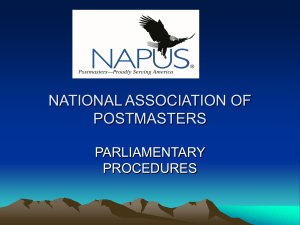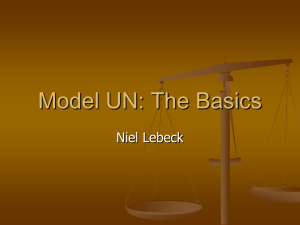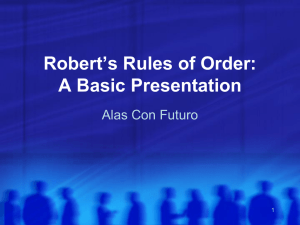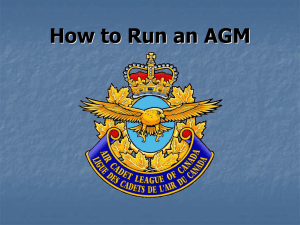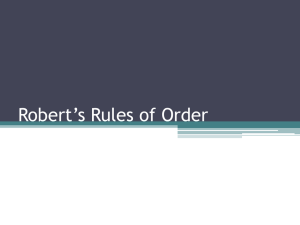Overview of Parliamentary Procedure
advertisement
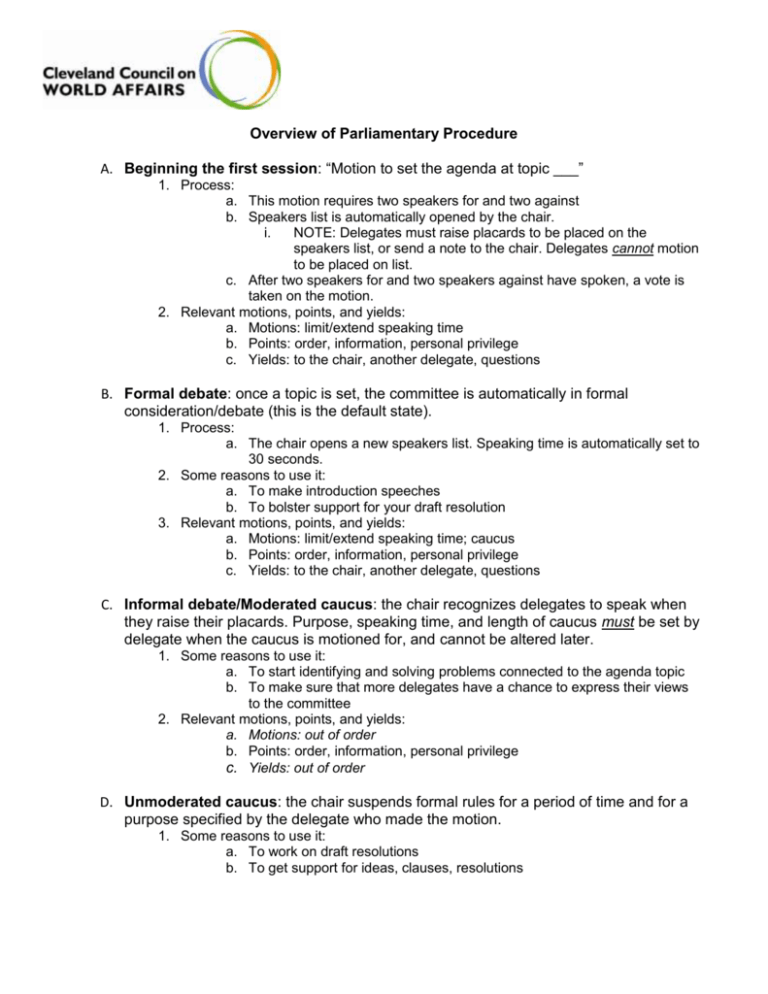
Overview of Parliamentary Procedure A. Beginning the first session: “Motion to set the agenda at topic ___” 1. Process: a. This motion requires two speakers for and two against b. Speakers list is automatically opened by the chair. i. NOTE: Delegates must raise placards to be placed on the speakers list, or send a note to the chair. Delegates cannot motion to be placed on list. c. After two speakers for and two speakers against have spoken, a vote is taken on the motion. 2. Relevant motions, points, and yields: a. Motions: limit/extend speaking time b. Points: order, information, personal privilege c. Yields: to the chair, another delegate, questions B. Formal debate: once a topic is set, the committee is automatically in formal consideration/debate (this is the default state). 1. Process: a. The chair opens a new speakers list. Speaking time is automatically set to 30 seconds. 2. Some reasons to use it: a. To make introduction speeches b. To bolster support for your draft resolution 3. Relevant motions, points, and yields: a. Motions: limit/extend speaking time; caucus b. Points: order, information, personal privilege c. Yields: to the chair, another delegate, questions C. Informal debate/Moderated caucus: the chair recognizes delegates to speak when they raise their placards. Purpose, speaking time, and length of caucus must be set by delegate when the caucus is motioned for, and cannot be altered later. 1. Some reasons to use it: a. To start identifying and solving problems connected to the agenda topic b. To make sure that more delegates have a chance to express their views to the committee 2. Relevant motions, points, and yields: a. Motions: out of order b. Points: order, information, personal privilege c. Yields: out of order D. Unmoderated caucus: the chair suspends formal rules for a period of time and for a purpose specified by the delegate who made the motion. 1. Some reasons to use it: a. To work on draft resolutions b. To get support for ideas, clauses, resolutions E. Introducing and voting on a resolution: (please see rules for all details) 1. Introduction of resolution: a. Sponsor moves to introduce as a resolution b. Friendly amendments: amendments submitted to the chair in writing that have the support of all listed (sponsor and co-sponsors). They are automatically added to the resolution. c. Unfriendly amendments: amendments submitted to the chair in writing that do not have the support of the sponsor and co-sponsors. Each unfriendly amendment must have a sponsor of its own, and 25% of the committee as its own co-sponsors. These are not automatically added to the resolution, but are voted on prior to the resolution itself during voting procedure. 2. Voting procedure: a. Process: i. If motion for previous question passes, then the committee moves into voting procedure and the room is locked down (no entries/exits, note passing, phone use, etc.) until the committee votes. ii. Consideration of unfriendly amendments, in the order in which they were introduced iii. Consideration of resolutions, in the order in which they were introduced b. NOTE: Once the committee is in voting procedure, ALL unfriendly amendments and resolutions on the floor must be voted on 3. Relevant motions, points, and yields: a. Motions: division of the question, roll call vote b. Points: order, information, personal privilege c. Yields: out of order F. Post-voting: 1. After passing at least one resolution: the topic is automatically concluded and the committee reverts to formal consideration. a. Relevant motions, points, and yields: i. Motions: set the agenda ii. Points: order, information, personal privilege iii. Yields: to the chair, another delegate, questions 2. After voting down all resolutions on the floor: the committee reverts to formal consideration and debate continues until a motion to table the topic passes or the speaker’s list runs out. a. Relevant Motions, Points, and Yields: i. Motions: table the topic ii. Points: order, information, personal privilege iii. Yields: to the chair, another delegate, questions
